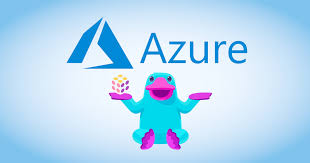Microsoft Corporation has launched a new service: Azure Container Instances (ACI) which promises to embellish the future of software management. This service gives the user the ability to operate containers straight through the Microsoft Azure cloud. The service doesn’t require the interference of virtual machines to run the operation; it happens directly and promptly.
What makes Azure Containers Instances such a technological boom is that it alleviates the hassle of managing containers by making the process directly, without the supplementation of virtual machines, other services, and latent infrastructure.
Azure Container Instances serves as a host machine to manage a number of containers promptly. Also, provides fundamental capabilities and fully supports supplemental services for container management such as orchestrators.
These orchestrators such as OpenShift, Kubernetes, Nomad, and Docker Swarm among many others are utilized to complete tasks that are more advanced such as automatically scaling, discovering services, and coordinating upgrades.
A comparison between Azure Container Instances and Container Orchestrators
If someone intends to manage several containers at once, they usually opt for the traditional container orchestrators aforementioned (Kubernetes, Nomad, etc…). These services are useful when it comes to managing several containers and their interactions together such as communication between containers, the management of data, and the arrangement of resources.
On the other hand, comes the Azure Container Instances which perform similar functions, but are less advanced because it wasn’t designed to perform as a fully-functioning orchestration tool.
So, what’s the difference between both?
Traditional container orchestration platforms have features that make them suitable for the deployment of several containers at once, and the interactions between them. These features include storage management, service discovery, load balancing, automatic bin-packing, horizontal scaling, automatic rollbacks, automatic rollouts, batch execution, container health monitoring, improved security, and configuration management among others.
However, Azure Container Instances is more of a basic tool; it allows the user to perform basic management functions of one container. In addition to these functions, the user has an option to integrate it with one of the other orchestration platforms to manage several containers and have access to more advanced functions.
The selling point is that since ACI is under the management of Azure, the orchestrator rids himself from the hassle of finding a suitable host to operate a single container. Because the cloud server is elastic, there are hosts available right away. Alternatively, the orchestrator aims its attention at making advanced functions associated with the management of several containers less simple such as networking, scaling, and service discovery.
Also, since most companies have now headed towards the remote route, the importance of software training has now increased. Therefore, with user-friendly software, the process becomes easier and less time-consuming.
Which is better for you: ACI or multi-container orchestrators?
Well, this question is highly dependant on the nature of your work and the projects you run. If you’re going to use the orchestrator for a long time for relatively stable operations, using a traditional orchestrator to scale via a virtual machine is more budget-friendly than operating these containers on Azure Container Instances.
However, if your workload is more short-term and fluctuates, then Azure Container Instances is the answer for you, even if it’s more pricer. That’s because Azure Container Instances works greatly to solve problems if unexpected changes occur. It works perfectly by coping with any fluctuations in the system, as effectively and promptly as possible.
Nonetheless, you can still make it work if your applications require immediate solutions to fluctuations. All you have to do is to scale your number of virtual machines in accordance with the number of containers used. Then, assign each container to a virtual machine.
The main advantage of using Azure Container Instances is that it rids you from the hassle and makes the process easier and simpler. The tool simplifies things by the deployment of containers directly on the server via the orchestrator. And when the containers are no longer in need, the orchestrator automatically gets rid of them.
What makes Azure Container Instances stand out?
This tool makes it easier and simpler to run containers without worrying about the hassle of managing servers and security since there’s a guaranteed way to protect the azure container instances server. It allows the user to fixate on the application and its design rather than the infrastructure and the complications that come with its management.
Also, the tool works perfectly when it comes to sharp demand fluctuations. The service deploys containers to the cloud simply and quickly. You can also utilize the features that come with the server such as Azure Blob Storage that makes data management efficient.
Other features such as the Azure Container Instances Logic Apps connector, Azure Functions, and Azure Queues to design a suitable infrastructure to scale out the containers deployed and those on demand.
